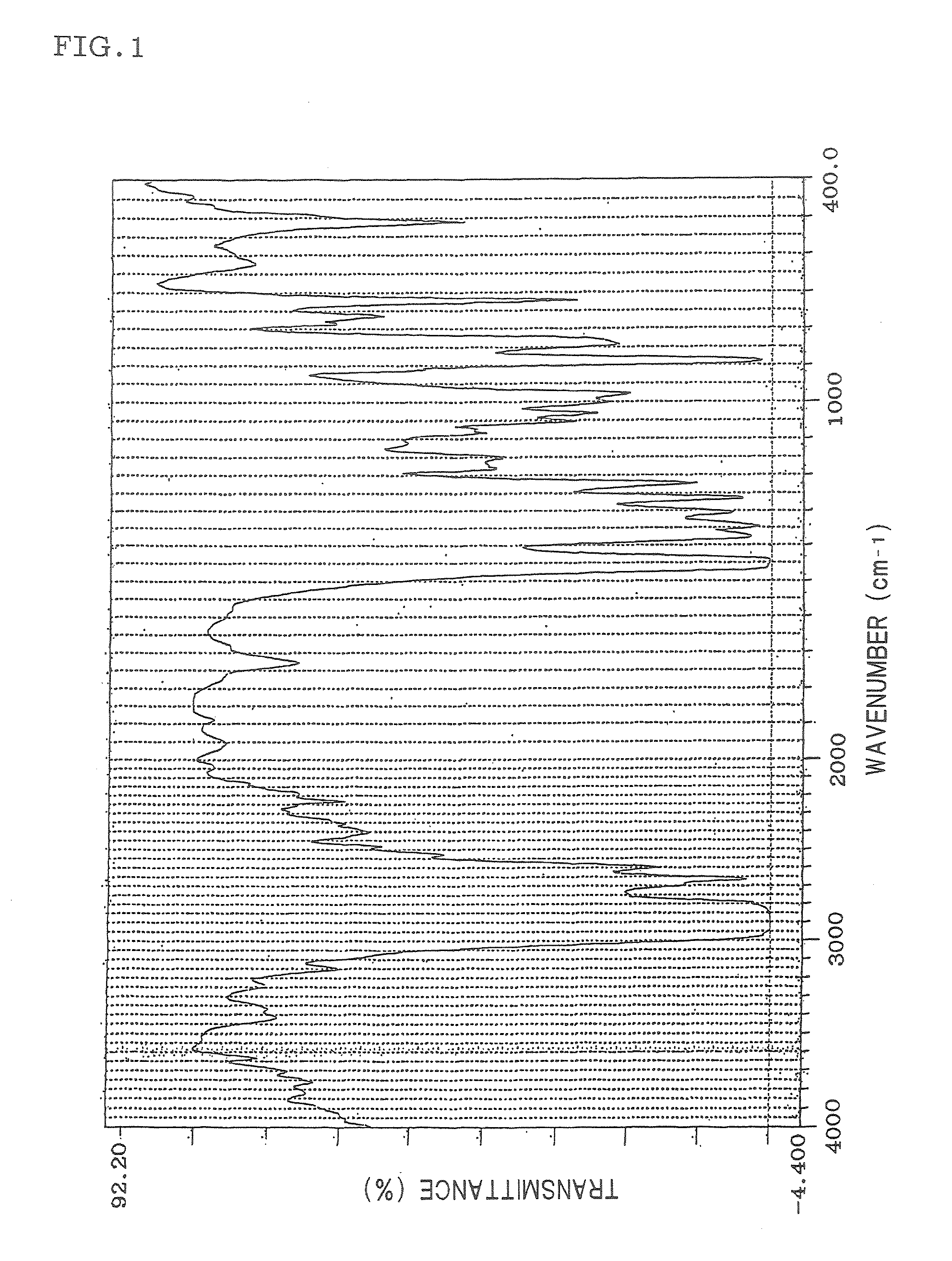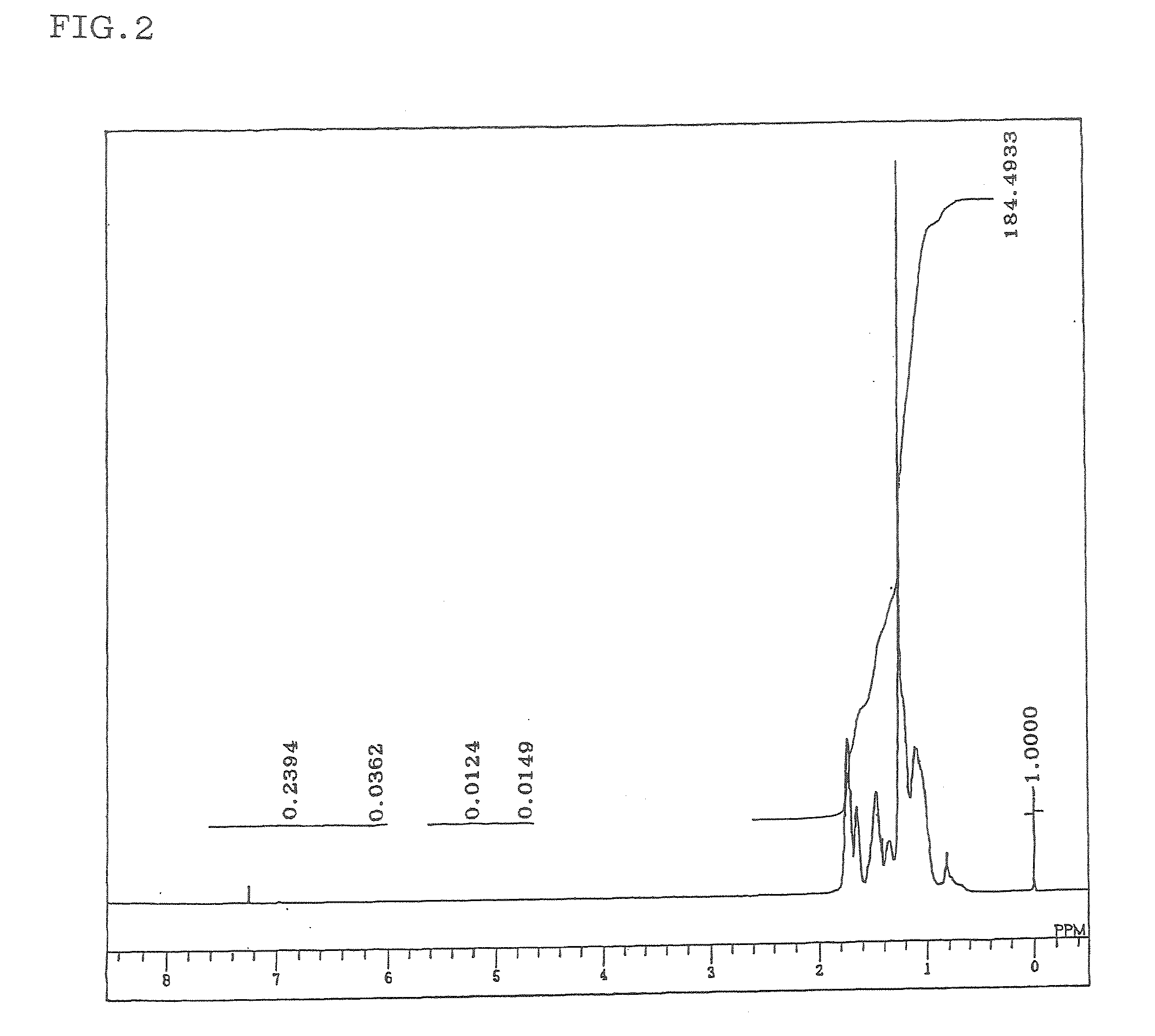Hydrogenated aromatic vinyl copolymer and molded article produced from the same
a technology of aromatic vinyl and molded articles, which is applied in the field of hydrogenated aromatic vinyl copolymer and molded articles, can solve the problems of insufficient impact, easy damage to molded articles, and easy knocking of defects and damages, and achieve excellent impact resistance, excellent transparency, and low water absorption
- Summary
- Abstract
- Description
- Claims
- Application Information
AI Technical Summary
Benefits of technology
Problems solved by technology
Method used
Image
Examples
synthesis example 1
[0039]A 50-liter reaction vessel of which the internal atmosphere was replaced with nitrogen was charged with 25 kg of cyclohexane, 1 g of tetrahydrofuran, 4,000 g of styrene, and 4.1 g of n-butyllithium. The monomers were polymerized under adiabatic conditions starting from a temperature of 70° C. After the polymerization reaction completed, the temperature was set to 35° C. and 1,000 g of 1,3-butadiene was added to continue the adiabatic polymerization. After 30 minutes, 2.7 g of tetrachlorosilane was added to effect a coupling reaction for 15 minutes. Then, 100 ml of methanol was added to terminate the coupling reaction. The reaction solution was steam-stripped and the resulting product was dried at 120° C. using a roller to obtain a block copolymer A. The obtained block copolymer A had a styrene content of 80%, a vinyl bond content of 15%, a weight average molecular weight of 161,000, and a value of “n” of 3.1.
synthesis example 2
[0040]A 50-liter reaction vessel of which the internal atmosphere was replaced with nitrogen was charged with 25 kg of cyclohexane, 1 g of tetrahydrofuran, 4,100 g of styrene, and 3.9 g of n-butyllithium. The monomers were polymerized under adiabatic conditions starting from a temperature of 70° C. After the polymerization reaction completed, the temperature was set to 35° C. and 900 g of 1,3-butadiene was added to continue the adiabatic polymerization. After 30 minutes, 2.6 g of tetrachlorosilane was added to effect a coupling reaction for 15 minutes. Then, 100 ml of methanol was added to terminate the coupling reaction. The reaction solution was steam-stripped and the resulting product was dried at 120° C. using a roller to obtain a block copolymer B. A styrene content, a vinyl bond content, a weight average molecular weight (Mw), and a value of “n” of the obtained block copolymer B are shown in Table 1.
synthesis example 3
[0041]A 50-liter reaction vessel of which the internal atmosphere was replaced with nitrogen was charged with 25 kg of cyclohexane, 1 g of tetrahydrofuran, 4,400 g of styrene, and 3.9 g of n-butyllithium. The monomers were polymerized under adiabatic conditions starting from a temperature of 70° C. After the polymerization reaction completed, the temperature was set to 35° C. and 600 g of 1,3-butadiene was added to continue the adiabatic polymerization. After 30 minutes, 2.6 g of tetrachlorosilane was added to effect a coupling reaction for 15 minutes. Then, 100 ml of methanol was added to terminate the coupling reaction. The reaction solution was steam-stripped and the resulting product was dried at 120° C. using a roller to obtain a block copolymer C. A styrene content, a vinyl bond content, a weight average molecular weight (Mw), and a value of “n” of the obtained block copolymer C are shown in Table 1.
PUM
| Property | Measurement | Unit |
|---|---|---|
| Temperature | aaaaa | aaaaa |
| Temperature | aaaaa | aaaaa |
| Fraction | aaaaa | aaaaa |
Abstract
Description
Claims
Application Information
 Login to View More
Login to View More - R&D
- Intellectual Property
- Life Sciences
- Materials
- Tech Scout
- Unparalleled Data Quality
- Higher Quality Content
- 60% Fewer Hallucinations
Browse by: Latest US Patents, China's latest patents, Technical Efficacy Thesaurus, Application Domain, Technology Topic, Popular Technical Reports.
© 2025 PatSnap. All rights reserved.Legal|Privacy policy|Modern Slavery Act Transparency Statement|Sitemap|About US| Contact US: help@patsnap.com


